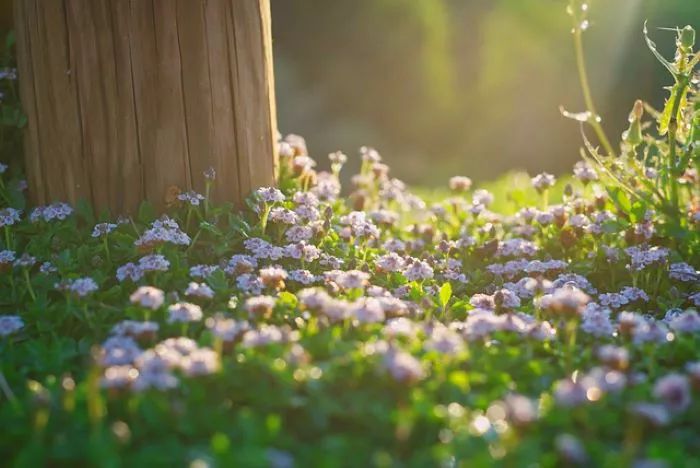Planting wildflower seeds can be a rewarding experience. Wildflowers add beauty to gardens, attract pollinators, and contribute to local ecosystems. Whether you are creating a wildflower meadow, enhancing your garden, or restoring a natural area, knowing how to plant wildflower seeds properly is essential. This article will guide you through the process of planting wildflower seeds, from preparation to care.
Understanding Wildflower Seeds
Wildflower seeds come in various shapes and sizes. They can be annuals, biennials, or perennials. Annuals complete their life cycle in one growing season, while biennials take two years to mature. Perennials live for several years and often bloom in cycles. When selecting wildflower seeds, consider the types that are native to your region. Native wildflowers are better adapted to local conditions and support local wildlife.
Choosing the Right Time to Plant
The timing of planting is crucial for the success of wildflower seeds. The best time to plant wildflower seeds depends on your climate and the specific species you choose. Generally, wildflower seeds can be sown in the spring or fall.
Spring Planting: If you live in an area with cold winters, wait until the last frost date has passed. This is typically when soil temperatures warm up. Spring planting allows seeds to germinate and grow during the warm months.
Fall Planting: In many regions, fall is an excellent time to plant wildflower seeds. Seeds benefit from the natural cold stratification during winter, which can improve germination rates in spring. Planting in late fall ensures that seeds are in the ground before winter.
Preparing the Site
Before planting wildflower seeds, proper site preparation is essential. The goal is to create an environment that encourages seed germination and growth.
Choose a Suitable Location: Select a sunny area with well-drained soil. Most wildflowers thrive in full sun, which means at least six hours of direct sunlight daily. Avoid areas with heavy shade or waterlogged soil.
Clear the Area: Remove weeds, grass, and debris from the planting site. This step is crucial as competition can hinder the growth of wildflowers. Use a hoe or shovel to clear the area and ensure a clean seedbed.
Loosen the Soil: Use a rake or garden fork to loosen the top few inches of soil. This helps improve drainage and allows seeds to make good contact with the soil. If the soil is compacted, wildflowers may struggle to establish roots.
Test Soil Quality: While wildflowers are generally hardy, testing the soil can provide valuable information. A soil test can determine pH and nutrient levels. Most wildflowers prefer a slightly acidic to neutral pH (around 6.0 to 7.0). If necessary, amend the soil with compost or organic matter to improve fertility.
Sowing the Seeds
Once the site is prepared, it is time to sow the wildflower seeds. This process can be done by hand or with a seed spreader.
Mix Seeds with Sand: If you have a small quantity of seeds, mix them with sand to help with even distribution. This technique helps prevent clumping and ensures that seeds are spread out across the planting area.
Sow the Seeds: Scatter the seeds evenly over the prepared soil. Aim for a density that allows for good coverage without overcrowding. Follow the recommended seeding rate on the seed packet, as different species have different requirements.
Rake Lightly: After sowing the seeds, lightly rake the soil to cover them with a thin layer of soil. This step helps protect the seeds from birds and ensures good seed-to-soil contact, which is vital for germination.
Water the Area: Gently water the area after planting. Use a fine spray to avoid displacing the seeds. Keep the soil consistently moist until the seeds germinate. Avoid overwatering, as this can lead to seed rot.
Caring for Wildflower Seedlings
After planting, it is important to care for the developing wildflower seedlings. Proper care will ensure healthy growth and vibrant blooms.
Monitor Moisture Levels: Keep an eye on soil moisture, especially during dry spells. Water the area as needed, but avoid saturating the soil. Once established, many wildflowers are drought-tolerant.
Weed Control: Regularly check for weeds that may compete with wildflowers. Hand-pulling or hoeing can help control weeds without damaging young seedlings. Be cautious not to disturb the wildflower roots.
Fertilization: In most cases, wildflowers do not require additional fertilization. If your soil is poor, a light application of a balanced, slow-release fertilizer can help. However, excessive fertilization can encourage weeds and reduce the diversity of wildflowers.
Patience is Key: Wildflowers may take time to establish. Annual species typically bloom within a few months, while perennials may take a year or two to flower. Be patient and allow the plants to grow naturally.
Enjoying Your Wildflowers
Once your wildflowers begin to bloom, enjoy the beauty they bring to your garden or landscape. Wildflowers attract pollinators and other wildlife, creating a vibrant ecosystem. Consider documenting the growth and changes in your wildflower area throughout the seasons.
Observe Wildlife: Take note of the pollinators and other wildlife that visit your wildflowers. These interactions are a sign of a healthy ecosystem and can be fascinating to observe.
Seed Collection: After the blooming season, allow some flowers to go to seed. Collecting seeds from your wildflowers can help you expand your planting in the future. Store seeds in a cool, dry place until you are ready to plant them again.
Practice Sustainable Gardening: Avoid using pesticides and herbicides in your wildflower area. These chemicals can harm beneficial insects and disrupt the delicate balance of the ecosystem.
Conclusion
Planting wildflower seeds is a rewarding way to enhance your garden and support local ecosystems. By understanding the origins of wildflowers, choosing the right time to plant, and preparing the site properly, you can create a thriving wildflower garden. With patience and care, you will enjoy the beauty of wildflowers while contributing to biodiversity in your area. Whether for aesthetic pleasure or ecological benefit, wildflowers are a wonderful addition to any landscape.


